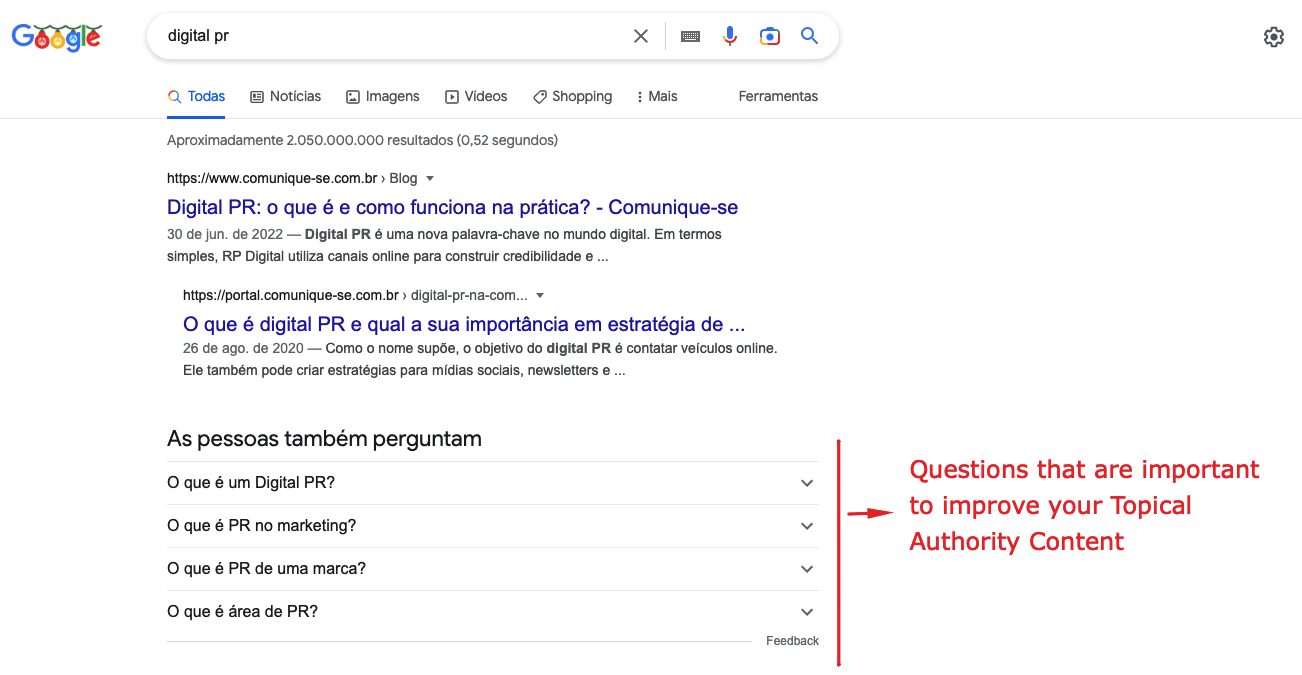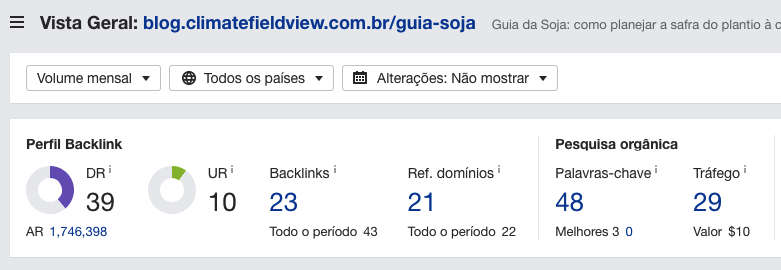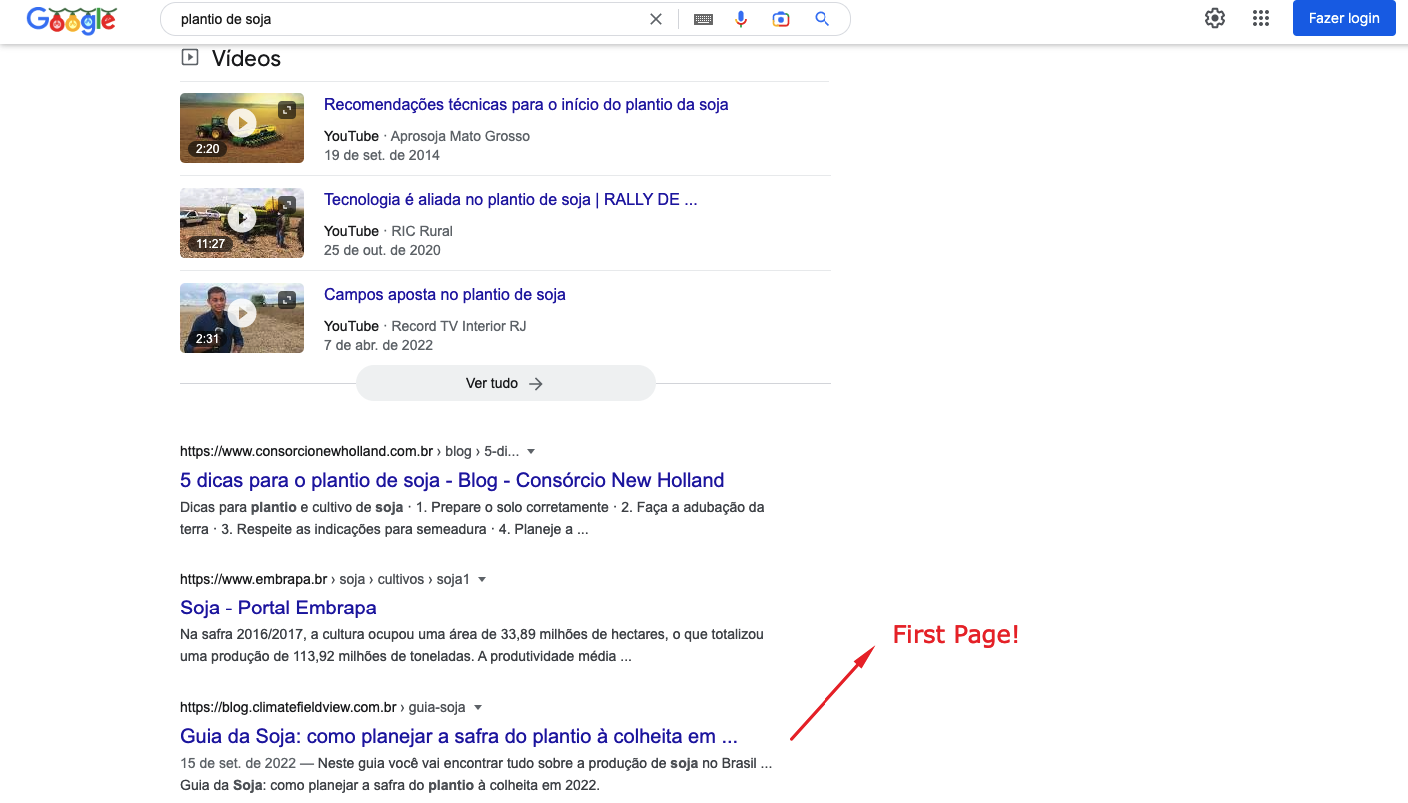SEO
How to Use Data-Driven to Create Better Digital PR Campaign

People talk about what they want to read and a good digital PR professional must know what to share.
Link building is one of the most difficult strategies in an SEO project. With some innovation and creativity, you can transform it into a tough, but rewarding journey.
So, I’m going to teach you how to improve your link building strategy by achieving important links using data-driven journalism, marketing research, and Google Forms.
Original research makes great linkbait!
First of all: nothing here is doctrine. This is just one of many available strategies that you can apply to your daily link building job.
As a specialist, one of my daily activities is to read and study a lot of articles.
We live in the “content age”, but you must keep in mind what really matters for your project. Simplifying and being objective about what you want for your clients will help you to find value in the journey, and find good content to inspire your strategies – like this article.
Hopefully, this material will open your mind to a lot of good ideas.
To be as helpful as possible, I’m going to teach you how to create a digital PR data-based campaign and pull the perfect headlines.
And don’t worry about the niche; This kind of strategy can be used by anyone.
Here’s how to merge data-driven with search intent and extract more information to share with people.
A good journalist knows that data is the backbone of any perfect campaign! I mean, we can’t argue with facts, right?
A good digital PR strategy must be driven by data.
Before Data, Some Questions To Improve Your Digital PR Strategy
To guide your digital PR strategy, ask yourself these key questions:
- What specific problem are you trying to solve with a campaign?
- Did your client do any PR or content marketing before?
- Who is your client’s direct competitor?
- Who is your client’s aspirational competitor?
- How much SEO knowledge does your client have?
- What is your client’s dream site on which to see their brand?
The answers will help you devise a holistic campaign to ladder up to all your goals.
Now it’s important to present some definitions of data-driven journalism.
What Is Data-Driven Journalism?
I could write some known definitions here, but I won’t.
I’ll talk to you as my teammates.
The basics: data-driven journalism is when your content is data-based.
By rooting your content in data, you are guaranteeing truth and reliability throughout your work.
Besides, with good data, it is possible to better understand user behavior trends and what your audience wants to read.
Data-driven journalism is the perfect mix between numbers and communication – it’s one of the most important ways to understand search intent.
Data protects us from failure.
The First Journalism Rule
A good journalist must cite their sources. This is the kind of lesson you learn in your first college journalism class.
Without sources, there is no valid information, no internet, or even link building.
Do you know anchor text? How about thinking like a source reference? That’s it!
Linkbuilding is a web source reference.
Data-Driven And Journalism: Partners Forever!
When you merged data-driven content and journalism, you can create digital PR campaigns that bring a lot of good links (that matter), with value and relevance.
Take note: relevance.
Without relevance, we have no deal.
The Beginning: Market Research
The first step to a perfect digital PR campaign is to do market research on the internet.
This helps you understand the market necessities, examine the most important news about your specific topic or theme, and devise ideas to create a good campaign.
Google News, Google Trends, Facebook, Instagram, TikTok… you must study all of these deeply to find gaps and opportunities!
As an example, I recently had a specific challenge: to talk about soy and its culture.
I soon discovered there was already plenty of content talking about this topic – so, what’s new? I couldn’t just regurgitate existing content; I needed to find a point of difference to set my work apart.
You must find the icing on the cake of your content.
After conducting plenty of research on the soy market, I found a good way in. While Google had a lot of content talking about soy, there was no content specifically exploring the opinions of soy farmers.
So, I decided to give voice to the soy farmers!
I put together a Google Form survey for soy farmers that focused on technology, problems on plantations, governmental help, and other things.
Structuring The Research
First of all, I structured the survey using Google Forms.
Simple. Just a quick few questions to understand what the farmers have to say!
But where did I find the questions? Through researching soy on Google, and by talking with an agronomist. I held an interview with him to structure my questions in the right way.
It’s important for you to have the validation of an area specialist; this will make your content more effective.
Remember E.A.T., your content should be strong and represent the issues and resolutions of a niche.
After my questions were ready, I created my Google Form survey and sent it to my client’s email.
The wonderful thing about this survey is that the answers could open up a universe of story possibilities.
With Google Forms And No Money, I Had A Good Survey
As with any survey or interview, it’s important to show gratitude to the participants. This helps them to feel part of the survey and the results.
To make a good survey you must first know some demographic information.
It’s essential to help you understand where the people are, who they are, and how they like to share communication and personal information.
So, make sure to include the questions below at the top of your survey:
To generate good data, don’t forget to ask:
- Age.
- Local area (state, city, neighborhood, etc.).
- Gender.
- Education.
- Occupation.
- Marital status.
After these questions, you can ask about your research theme.
These questions are important because they enable you to find more compelling headlines.
For example, in my case: Climate Fieldview Change Is The Challenge To 74.4% Of Soy Producers In Brazil.
Tabulating Data
I kept the forms open for answers for 15 to 20 days, which I believe is a decent period for a survey.
In this instance particularly, we had more than 1,000 answers. A good sample.
But for a digital PR campaign in a journalistic way, more than 300 answers is a good number to start.
Now, it’s time to tabulate.
You can export the answers from Google Forms into a spreadsheet like so:
You must read the numbers – and don’t forget to use your journalist’s nose to find good headlines.
To make it easier, you can use a dynamic table, which allows you to play with numbers.
After examining the answers and making your analysis, you’ll have a much clearer picture of the best way to create the content.
And good content and link baiting spots are necessary to validate your link building job.
Topical Authority Content – Link Bait
After exploring the survey and synthesizing its insights, it’s time to plan the content for release and distribution.
In this case, I used my customer’s blog to make the research into a linkable asset.
I wrote topical authority content. I explained the survey details and what data was pulled.
It was a huge piece of content about the culture of soy, including information about the history of soy up until the present.
Topical authority, done! I went for the link achievement by creating strong releases and good pitches.
 Image from author, December 2022
Image from author, December 2022For the launch, I conducted different outreach to each site where I wanted to get the link.
This is a good strategy in order to make sure that journalists understand the exclusive material in their email inboxes.
For each headline, a release.
For each journalist, a unique outreach.
How To Create Good Topical Authority Content
Every linkable asset must be a really good one to be “clickable.”
Topical authority (TA) is extraordinary for making this happen.
This is the result of embracing the entirety of a subject or topic, touching all its parts, and communicating everything possible about it on your topical authority material.
To build topical authority, look for themes on Google and use tools such as Semrush, Keytrends, Ahrefs, and others.
If you want to write topical authority content, you must do a Google search on the topic and study the well-positioned sites on the search engine results pages (SERPs).
Look at how they were produced, written, and the data used – go deep on each material there.
Check out the People Also Asked and the related searches, to understand the breadth of how people are thinking about the topic.
 Screenshot from search for [digital pr], Google, December 2022
Screenshot from search for [digital pr], Google, December 2022Create a spreadsheet with all this content data and use it to map what you want to create.
Once it’s complete, it’s time to write the TA material.
To find good queries, you can use related search.
Devote some time to building the best content online about the subject. This will help attract relevant links and also help your site, as Google will understand that you are the authority on this topic.
First, because of the links that the content will receive, and second, because of the richness of the content itself.
Remember I told you about the journey of link building? It is essential to respect the link building journey; it is the process. Without it, there is no prize “in the end.”
The challenge is keeping the end results in place, as well as not forgetting all the steps that we took in order to reach a successful outcome.
You need to map the campaign steps and record everything. Absolutely everything.
Create a campaign checklist so you can get an idea of how much time you are spending doing each thing. The checklist will also make sure you haven’t missed anything along the way.
What I call a “wishlist” is a spreadsheet with the name of the portal, the contact, and the approach to “sell” the content.
 Image created by author, December 2022
Image created by author, December 2022Each portal must be mapped with care.
Analyze portal traffic and see if it is in your customer’s segment.
You can put some KPIs to find good sites: domain rating, traffic, search intent of the site, acting niche, external and internal links, and others.
But these KPIs must be taken together; Don’t make your choice based on just one KPI.
Here’s the wishlist template you can use to organize your processes:
| Site | Why* | Pitch | Subject | Outreach | Contact | link |
- Why* – The reasons and searches that justify a link opportunity. Traffic, tier (01, 02, 03), domain rating, etc.
Tip: Do not release on Monday or Friday. On Mondays, journalists have a lot of emails in their inbox. On Fridays, journalists want to rest and think about the weekend,
To Infinity And Beyond
I have generated more than 23 links within 10 days of releasing the campaign with important players.
 Image created by author, December 2022
Image created by author, December 2022Besides these results, we got more than 30 links to our research in one month!
What is important besides links? E.A.T! With this kind of research you can improve authority.
And the TA post is already receiving traffic with a first-page keyword, “plantio de soja” within just three months of the campaign:
 Image created by author, December 2022
Image created by author, December 2022Google SERP with a keyword on the first page:
 Screenshot from search for [plantio de soja], Google, December 2022
Screenshot from search for [plantio de soja], Google, December 2022In Conclusion
It’s worth noting that soy culture is a small niche.
But if you use this strategy in more popular markets like tourism, fashion, food, or others, the results could be bigger.
And now, a step-by-step you can’t forget:
- Make a survey (15-20 days).
- Tabulate the answers.
- Create good headlines.
- Create a wishlist.
- Release the content.
Here are some of the links to my headlines, all of them in good sites:
Now at 42 links… and counting!
More resources:
Featured Image: Suteren/Shutterstock
SEO
How To Write ChatGPT Prompts To Get The Best Results

ChatGPT is a game changer in the field of SEO. This powerful language model can generate human-like content, making it an invaluable tool for SEO professionals.
However, the prompts you provide largely determine the quality of the output.
To unlock the full potential of ChatGPT and create content that resonates with your audience and search engines, writing effective prompts is crucial.
In this comprehensive guide, we’ll explore the art of writing prompts for ChatGPT, covering everything from basic techniques to advanced strategies for layering prompts and generating high-quality, SEO-friendly content.
Writing Prompts For ChatGPT
What Is A ChatGPT Prompt?
A ChatGPT prompt is an instruction or discussion topic a user provides for the ChatGPT AI model to respond to.
The prompt can be a question, statement, or any other stimulus to spark creativity, reflection, or engagement.
Users can use the prompt to generate ideas, share their thoughts, or start a conversation.
ChatGPT prompts are designed to be open-ended and can be customized based on the user’s preferences and interests.
How To Write Prompts For ChatGPT
Start by giving ChatGPT a writing prompt, such as, “Write a short story about a person who discovers they have a superpower.”
ChatGPT will then generate a response based on your prompt. Depending on the prompt’s complexity and the level of detail you requested, the answer may be a few sentences or several paragraphs long.
Use the ChatGPT-generated response as a starting point for your writing. You can take the ideas and concepts presented in the answer and expand upon them, adding your own unique spin to the story.
If you want to generate additional ideas, try asking ChatGPT follow-up questions related to your original prompt.
For example, you could ask, “What challenges might the person face in exploring their newfound superpower?” Or, “How might the person’s relationships with others be affected by their superpower?”
Remember that ChatGPT’s answers are generated by artificial intelligence and may not always be perfect or exactly what you want.
However, they can still be a great source of inspiration and help you start writing.
Must-Have GPTs Assistant
I recommend installing the WebBrowser Assistant created by the OpenAI Team. This tool allows you to add relevant Bing results to your ChatGPT prompts.
This assistant adds the first web results to your ChatGPT prompts for more accurate and up-to-date conversations.
It is very easy to install in only two clicks. (Click on Start Chat.)
For example, if I ask, “Who is Vincent Terrasi?,” ChatGPT has no answer.
With WebBrower Assistant, the assistant creates a new prompt with the first Bing results, and now ChatGPT knows who Vincent Terrasi is.
 Screenshot from ChatGPT, March 2023
Screenshot from ChatGPT, March 2023You can test other GPT assistants available in the GPTs search engine if you want to use Google results.
Master Reverse Prompt Engineering
ChatGPT can be an excellent tool for reverse engineering prompts because it generates natural and engaging responses to any given input.
By analyzing the prompts generated by ChatGPT, it is possible to gain insight into the model’s underlying thought processes and decision-making strategies.
One key benefit of using ChatGPT to reverse engineer prompts is that the model is highly transparent in its decision-making.
This means that the reasoning and logic behind each response can be traced, making it easier to understand how the model arrives at its conclusions.
Once you’ve done this a few times for different types of content, you’ll gain insight into crafting more effective prompts.
Prepare Your ChatGPT For Generating Prompts
First, activate the reverse prompt engineering.
- Type the following prompt: “Enable Reverse Prompt Engineering? By Reverse Prompt Engineering I mean creating a prompt from a given text.”
 Screenshot from ChatGPT, March 2023
Screenshot from ChatGPT, March 2023ChatGPT is now ready to generate your prompt. You can test the product description in a new chatbot session and evaluate the generated prompt.
- Type: “Create a very technical reverse prompt engineering template for a product description about iPhone 11.”
 Screenshot from ChatGPT, March 2023
Screenshot from ChatGPT, March 2023The result is amazing. You can test with a full text that you want to reproduce. Here is an example of a prompt for selling a Kindle on Amazon.
- Type: “Reverse Prompt engineer the following {product), capture the writing style and the length of the text :
product =”
 Screenshot from ChatGPT, March 2023
Screenshot from ChatGPT, March 2023I tested it on an SEJ blog post. Enjoy the analysis – it is excellent.
- Type: “Reverse Prompt engineer the following {text}, capture the tone and writing style of the {text} to include in the prompt :
text = all text coming from https://www.searchenginejournal.com/google-bard-training-data/478941/”
 Screenshot from ChatGPT, March 2023
Screenshot from ChatGPT, March 2023But be careful not to use ChatGPT to generate your texts. It is just a personal assistant.
Go Deeper
Prompts and examples for SEO:
- Keyword research and content ideas prompt: “Provide a list of 20 long-tail keyword ideas related to ‘local SEO strategies’ along with brief content topic descriptions for each keyword.”
- Optimizing content for featured snippets prompt: “Write a 40-50 word paragraph optimized for the query ‘what is the featured snippet in Google search’ that could potentially earn the featured snippet.”
- Creating meta descriptions prompt: “Draft a compelling meta description for the following blog post title: ’10 Technical SEO Factors You Can’t Ignore in 2024′.”
Important Considerations:
- Always Fact-Check: While ChatGPT can be a helpful tool, it’s crucial to remember that it may generate inaccurate or fabricated information. Always verify any facts, statistics, or quotes generated by ChatGPT before incorporating them into your content.
- Maintain Control and Creativity: Use ChatGPT as a tool to assist your writing, not replace it. Don’t rely on it to do your thinking or create content from scratch. Your unique perspective and creativity are essential for producing high-quality, engaging content.
- Iteration is Key: Refine and revise the outputs generated by ChatGPT to ensure they align with your voice, style, and intended message.
Additional Prompts for Rewording and SEO:
– Rewrite this sentence to be more concise and impactful.
– Suggest alternative phrasing for this section to improve clarity.
– Identify opportunities to incorporate relevant internal and external links.
– Analyze the keyword density and suggest improvements for better SEO.
Remember, while ChatGPT can be a valuable tool, it’s essential to use it responsibly and maintain control over your content creation process.
Experiment And Refine Your Prompting Techniques
Writing effective prompts for ChatGPT is an essential skill for any SEO professional who wants to harness the power of AI-generated content.
Hopefully, the insights and examples shared in this article can inspire you and help guide you to crafting stronger prompts that yield high-quality content.
Remember to experiment with layering prompts, iterating on the output, and continually refining your prompting techniques.
This will help you stay ahead of the curve in the ever-changing world of SEO.
More resources:
Featured Image: Tapati Rinchumrus/Shutterstock
SEO
Measuring Content Impact Across The Customer Journey

Understanding the impact of your content at every touchpoint of the customer journey is essential – but that’s easier said than done. From attracting potential leads to nurturing them into loyal customers, there are many touchpoints to look into.
So how do you identify and take advantage of these opportunities for growth?
Watch this on-demand webinar and learn a comprehensive approach for measuring the value of your content initiatives, so you can optimize resource allocation for maximum impact.
You’ll learn:
- Fresh methods for measuring your content’s impact.
- Fascinating insights using first-touch attribution, and how it differs from the usual last-touch perspective.
- Ways to persuade decision-makers to invest in more content by showcasing its value convincingly.
With Bill Franklin and Oliver Tani of DAC Group, we unravel the nuances of attribution modeling, emphasizing the significance of layering first-touch and last-touch attribution within your measurement strategy.
Check out these insights to help you craft compelling content tailored to each stage, using an approach rooted in first-hand experience to ensure your content resonates.
Whether you’re a seasoned marketer or new to content measurement, this webinar promises valuable insights and actionable tactics to elevate your SEO game and optimize your content initiatives for success.
View the slides below or check out the full webinar for all the details.
SEO
How to Find and Use Competitor Keywords

Competitor keywords are the keywords your rivals rank for in Google’s search results. They may rank organically or pay for Google Ads to rank in the paid results.
Knowing your competitors’ keywords is the easiest form of keyword research. If your competitors rank for or target particular keywords, it might be worth it for you to target them, too.
There is no way to see your competitors’ keywords without a tool like Ahrefs, which has a database of keywords and the sites that rank for them. As far as we know, Ahrefs has the biggest database of these keywords.
How to find all the keywords your competitor ranks for
- Go to Ahrefs’ Site Explorer
- Enter your competitor’s domain
- Go to the Organic keywords report
The report is sorted by traffic to show you the keywords sending your competitor the most visits. For example, Mailchimp gets most of its organic traffic from the keyword “mailchimp.”


Since you’re unlikely to rank for your competitor’s brand, you might want to exclude branded keywords from the report. You can do this by adding a Keyword > Doesn’t contain filter. In this example, we’ll filter out keywords containing “mailchimp” or any potential misspellings:


If you’re a new brand competing with one that’s established, you might also want to look for popular low-difficulty keywords. You can do this by setting the Volume filter to a minimum of 500 and the KD filter to a maximum of 10.


How to find keywords your competitor ranks for, but you don’t
- Go to Competitive Analysis
- Enter your domain in the This target doesn’t rank for section
- Enter your competitor’s domain in the But these competitors do section


Hit “Show keyword opportunities,” and you’ll see all the keywords your competitor ranks for, but you don’t.


You can also add a Volume and KD filter to find popular, low-difficulty keywords in this report.


How to find keywords multiple competitors rank for, but you don’t
- Go to Competitive Analysis
- Enter your domain in the This target doesn’t rank for section
- Enter the domains of multiple competitors in the But these competitors do section


You’ll see all the keywords that at least one of these competitors ranks for, but you don’t.


You can also narrow the list down to keywords that all competitors rank for. Click on the Competitors’ positions filter and choose All 3 competitors:


- Go to Ahrefs’ Site Explorer
- Enter your competitor’s domain
- Go to the Paid keywords report


This report shows you the keywords your competitors are targeting via Google Ads.
Since your competitor is paying for traffic from these keywords, it may indicate that they’re profitable for them—and could be for you, too.
You know what keywords your competitors are ranking for or bidding on. But what do you do with them? There are basically three options.
1. Create pages to target these keywords
You can only rank for keywords if you have content about them. So, the most straightforward thing you can do for competitors’ keywords you want to rank for is to create pages to target them.
However, before you do this, it’s worth clustering your competitor’s keywords by Parent Topic. This will group keywords that mean the same or similar things so you can target them all with one page.
Here’s how to do that:
- Export your competitor’s keywords, either from the Organic Keywords or Content Gap report
- Paste them into Keywords Explorer
- Click the “Clusters by Parent Topic” tab


For example, MailChimp ranks for keywords like “what is digital marketing” and “digital marketing definition.” These and many others get clustered under the Parent Topic of “digital marketing” because people searching for them are all looking for the same thing: a definition of digital marketing. You only need to create one page to potentially rank for all these keywords.


2. Optimize existing content by filling subtopics
You don’t always need to create new content to rank for competitors’ keywords. Sometimes, you can optimize the content you already have to rank for them.
How do you know which keywords you can do this for? Try this:
- Export your competitor’s keywords
- Paste them into Keywords Explorer
- Click the “Clusters by Parent Topic” tab
- Look for Parent Topics you already have content about
For example, if we analyze our competitor, we can see that seven keywords they rank for fall under the Parent Topic of “press release template.”


If we search our site, we see that we already have a page about this topic.


If we click the caret and check the keywords in the cluster, we see keywords like “press release example” and “press release format.”


To rank for the keywords in the cluster, we can probably optimize the page we already have by adding sections about the subtopics of “press release examples” and “press release format.”
3. Target these keywords with Google Ads
Paid keywords are the simplest—look through the report and see if there are any relevant keywords you might want to target, too.
For example, Mailchimp is bidding for the keyword “how to create a newsletter.”


If you’re ConvertKit, you may also want to target this keyword since it’s relevant.
If you decide to target the same keyword via Google Ads, you can hover over the magnifying glass to see the ads your competitor is using.


You can also see the landing page your competitor directs ad traffic to under the URL column.


Learn more
Check out more tutorials on how to do competitor keyword analysis:
-

 PPC5 days ago
PPC5 days ago19 Best SEO Tools in 2024 (For Every Use Case)
-

 MARKETING7 days ago
MARKETING7 days agoStreamlining Processes for Increased Efficiency and Results
-
SEARCHENGINES6 days ago
Daily Search Forum Recap: April 17, 2024
-

 PPC7 days ago
PPC7 days ago97 Marvelous May Content Ideas for Blog Posts, Videos, & More
-

 SEO7 days ago
SEO7 days agoAn In-Depth Guide And Best Practices For Mobile SEO
-
SEARCHENGINES5 days ago
Daily Search Forum Recap: April 18, 2024
-

 MARKETING6 days ago
MARKETING6 days agoEcommerce evolution: Blurring the lines between B2B and B2C
-
SEARCHENGINES4 days ago
Daily Search Forum Recap: April 19, 2024
















You must be logged in to post a comment Login